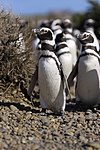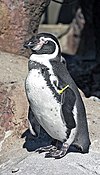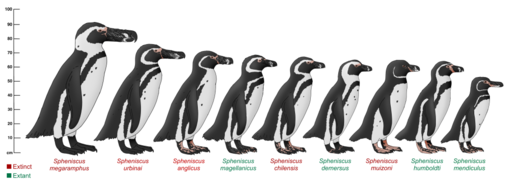Superregnum: Eukaryota
Cladus: Unikonta
Cladus: Opisthokonta
Cladus: Holozoa
Regnum: Animalia
Subregnum: Eumetazoa
Cladus: Bilateria
Cladus: Nephrozoa
Superphylum: Deuterostomia
Phylum: Chordata
Subphylum: Vertebrata
Infraphylum: Gnathostomata
Megaclassis: Osteichthyes
Cladus: Sarcopterygii
Cladus: Rhipidistia
Cladus: Tetrapodomorpha
Cladus: Eotetrapodiformes
Cladus: Elpistostegalia
Superclassis: Tetrapoda
Cladus: Reptiliomorpha
Cladus: Amniota
Classis: Reptilia
Cladus: Eureptilia
Cladus: Romeriida
Subclassis: Diapsida
Cladus: Sauria
Infraclassis: Archosauromorpha
Cladus: Crurotarsi
Divisio: Archosauria
Cladus: Avemetatarsalia
Cladus: Ornithodira
Subtaxon: Dinosauromorpha
Cladus: Dinosauriformes
Cladus: Dracohors
Cladus: Dinosauria
Ordo: Saurischia
Cladus: Eusaurischia
Subordo: Theropoda
Cladus: Neotheropoda
Cladus: Averostra
Cladus: Tetanurae
Cladus: Avetheropoda
Cladus: Coelurosauria
Cladus: Tyrannoraptora
Cladus: Maniraptoromorpha
Cladus: Maniraptoriformes
Cladus: Maniraptora
Cladus: Pennaraptora
Cladus: Paraves
Cladus: Eumaniraptora
Cladus: Avialae
Infraclassis: Aves
Cladus: Euavialae
Cladus: Avebrevicauda
Cladus: Pygostylia
Cladus: Ornithothoraces
Cladus: Ornithuromorpha
Cladus: Carinatae
Parvclassis: Neornithes
Cohors: Neognathae
Cladus: Neoaves
Cladus: Aequornithes
Ordo: Sphenisciformes
Familia: Spheniscidae
Genus: Spheniscus
Species: S. demersus – S. humboldti – S. magellanicus – S. mendiculus – †S. anglicus – †S. chilensis – †S. megaramphus – †S. muizoni – †S. urbinai
Name
Spheniscus Brisson, 1760: 52
Typus
Diomedea demersa Linnaeus, 1758 = Spheniscus demersus
References
Brisson, M.J. 1760. Ornithologie ou méthode contenant la division des oiseaux en ordres, sections, genres, especes & leurs variétés. A laquelle on a joint une description exacte de chaque espece, avec les citations des auteurs qui en ont traité, les noms qu'ils leur ont donnés, ceux que leur ont donnés les différentes nations, & les noms vulgaires. Ouvrage enrichi de figures en taille-douce. Tome I. - pp. j-xxiv [= 1-24], 1-526, j-lxxiij [= 1-73], Pl. I-XXXVII [= 1-37]. Paris. (Bauche). Original description p.52 BHL Reference page. Tome 6, p.96 BHL
Vernacular names
English: Banded Penguins
日本語: ケープペンギン属
lietuvių: Akiuotieji pingvinai
ไทย: เพนกวินลาย
The banded penguins are penguins that belong to the genus Spheniscus. There are four living species, all with similar banded plumage patterns. They are sometimes also known as "jack-ass penguins" due to their loud locator calls sounding similar to a donkey braying.[1] Common traits include a band of black that runs around their bodies bordering their black dorsal coloring, black beaks with a small vertical white band, distinct spots on their bellies, and a small patch of unfeathered or thinly feathered skin around their eyes and underdeveloped fluff sack that can be either white or pink. All members of this genus lay eggs and raise their young in nests situated in burrows or natural depressions in the earth.[2][3]
Systematics
Banded penguins belong to the genus Spheniscus, which was introduced by the French zoologist Mathurin Jacques Brisson in 1760 with the African penguin (Spheniscus demersus) as the type species.[4][5] The genus name Spheniscus is derived from the Ancient Greek word σφήν (sphẽn) meaning "wedge" and is a reference to the animal's thin, wedge-shaped flippers.[6][7]
Species
Extant
The four extant species of banded penguins (Spheniscus) are:
| Image | Common name | Binomial name | Distribution |
|---|---|---|---|
 |
Magellanic penguin | Spheniscus magellanicus | Brazil, coastal Argentina, Chile and the Falkland Islands |
 |
Humboldt penguin | Spheniscus humboldti | coastal Chile and Peru |
 |
Galapagos penguin | Spheniscus mendiculus | Galápagos Islands. |
 |
African penguin, black-footed or jackass penguin | Spheniscus demersus | 24 islands and 3 mainland locations between Namibia and Algoa Bay, near Port Elizabeth, South Africa. |
.
Extinct
All currently recognized Spheniscus species, extant and extinct.
Several extinct species are known from fossils:
Spheniscus anglicus (Late Miocene of Chile)[8]
Spheniscus chilensis (Late Miocene/Early Pliocene of Chile)[9]
Spheniscus megaramphus (Late Miocene/Early Pliocene of Peru and Chile)[10][11]
Spheniscus muizoni (Middle/Late Miocene of Cerro La Bruja, Peru)[12]
Spheniscus urbinai (Late Miocene/Early Pliocene of Peru and Chile)[11]
The former Spheniscus predemersus is now placed in a monotypic genus Inguza.
Range
African penguin skeleton (Museum of Osteology)
Scientists believe that the genus Spheniscus originated in South America, even though the oldest fossils assigned to the taxon are from Antarctica. The oldest Spheniscus fossils are also the oldest penguin fossils from Antarctica.[13] African, Humboldt, and Magellanic penguins all live in temperate climates. The African penguin lives in South Africa, the Humboldt penguin lives in coastal Peru and Chile while the Magellanic penguin lives in coastal Chile, Argentina, and the Falkland Islands. Humboldt and Magellanic penguins are partially sympatric, since their ranges overlap in southern Chile.[14][15] The Galápagos penguin is endemic to the Galápagos Islands, making it the most northerly of all penguin species.[16]
Vocalizations
Banded penguins use vocalizations for localization, socialization and to allow recognition for conspecifics or mates.[17] Vocalizations in birds are produced by vibrations of the syrinx, located at the bottom of the trachea.[17][3] These penguins are sometimes referred to as "jack-ass" penguins, since their vocalizations tend to sound similar to a donkey braying.[1] Vocalizations in adult penguins can be classified into 4 distinct categories based on its acoustic properties and the behavioural context in which a vocalization is produced.[17] The 4 categories of vocalizations include contact calls, agonistic calls, ecstatic display songs or mutual display songs.[17]
Contact calls
Contact calls are vocalizations used primarily to maintain unity within a social group, to identify ones self and to maintain contact with a mate.[17] Vocal individuality has evolved in banded penguins due to their large social group sizes.[18] Contact calls are frequently used by banded penguins to form large flocks when foraging at sea.[17] It is easy to become separated while diving for food, therefore these penguins use contact calls to stay in contact with each other when they are out of sight.[17] A contact call can relay an excess of information about an individual penguin, including the penguins sex, age, social status within a group and emotional state.[19]
Agonistic calls
Agonistic calls are vocalizations used when a banded penguin is demonstrating agonistic behaviour, which is characterized by aggressive interactions or fighting.[3] Typically, banded penguins vocalize agonistic calls when defending a territory, such as their nest, against conspecifics.[17] For nesting penguin species, such as banded penguins, the mating pair and their offspring are the only individuals allowed on their nest.[20] Thus, any conspecific from the large colony that intrudes this territory will be a threat and an agonistic call will be produced.[20]
Display songs
A pair of Magellanic penguins, with one performing a display song
There are two types of display songs vocalized by banded penguins; ecstatic display songs and mutual display songs.[17] Ecstatic display songs are the loudest and most complex vocalization performed by banded penguins.[3] They are composed of a sequence of distinct acoustic syllables that combine to form a complete phrase and are often displayed during their breeding season.[3] Despite the close relatedness of banded penguin species, the ecstatic display calls of African, Humboldt and Magellanic penguins are distinctly recognizable, even to human listeners.[17] Typically, females respond more strongly to ecstatic display calls from their mates than from other conspecifics.[3] Furthermore, there is evidence to suggest that ecstatic display songs may convey vocal individuality through the type of syllables the song produces.[3] This vocal individuality can convey information such as body size and weight, since heavier penguins typically emit longer and lower-pitched vocalizations.[18] Mutual display songs are similar to ecstatic display songs in that they are also complex sequences of acoustic syllables. However, mutual display songs are performed by mates at their nesting site.[3]
Source-filter theory
The source-filter theory is a framework used for studying the communication of mammalian animals through vocalizations.[3] According to this theory, acoustic calls are produced by a source and then must be filtered to remove certain frequencies or leave others unchanged, which produces vocal individuality.[3] In mammals, the source is the vibrations in the larynx and the filter is the super laryngeal vocal tract.[3] However, birds use a different source and filter to produce vocalizations. They use a structure called the syrinx as their source of vibrations and their trachea acts as the filter.[3] The source-filter theory has become increasingly popular to study birds, such as various species of banded penguins. This theory can be used to investigate how acoustic variation and individuality within a set of closely related species is attributed to distinct morphological differences in their vocal organs.[3] The equivalence of the source-filter theory in humans is the source-filter model of speech production.
References
Favaro L; Ozella L; Pessani D (20 July 2014). "The Vocal Repertoire of the African Penguin (Spheniscus demersus): Structure and Function of Calls". PLoS ONE. 9 (7): e103460. Bibcode:2014PLoSO...9j3460F. doi:10.1371/journal.pone.0103460. PMC 4116197. PMID 25076136.
Ellis, Richard (2004). No Turning Back: The Life and Death of Animal Species. New York: Harper Perennial. p. 69. ISBN 978-0-06-055804-8.
Favaro, Livio; Gamba, Marco; Gili, Claudia; Pessani, Daniela (2017-02-15). "Acoustic correlates of body size and individual identity in banded penguins". PLoS ONE. 12 (2): e0170001. Bibcode:2017PLoSO..1270001F. doi:10.1371/journal.pone.0170001. ISSN 1932-6203. PMC 5310857. PMID 28199318.
Brisson, Mathurin Jacques (1760). Ornithologie, ou, Méthode contenant la division des oiseaux en ordres, sections, genres, especes & leurs variétés (in French and Latin). Vol. 1. Paris: Jean-Baptiste Bauche. Vol. 1, p. 42, Vol. 6, p. 96.
Mayr, Ernst; Cottrell, G. William, eds. (1979). Check-list of Birds of the World. Vol. 1 (2nd ed.). Cambridge, Massachusetts: Museum of Comparative Zoology. p. 133.
Jobling, James A. (2010). The Helm Dictionary of Scientific Bird Names. London: Christopher Helm Publishers. pp. 361. ISBN 978-1408125014.
Liddell, Henry George; Scott, Robert (1940). "σφήν". A Greek–English Lexicon (Ninth ed.). Oxford: Clarendon Press.
Benson, Richard. "A new species of penguin from the late Miocene of Chile, with comments on the stratigraphic range of Palaeospheniscus" (PDF). Retrieved 1 December 2020.
Emslie, Steven. "A new species of penguin (Spheniscidae: Spheniscus) and other birds for the late Pliocene of Chile". Biodiversity Heritage Library. pp. 308–313. Retrieved 1 December 2020.
Stucchi, Marcelo (2003). "Una nueva especie de spheniscidae del Mioceno Tardío de la Formación Pisco, Perú". Bulletin de l'Institut Français d'Études Andines. 32 (2): 361–375. doi:10.4000/bifea.6488. Retrieved 1 December 2020.
Stucchi, 2007, p.370
Göhlich, 2007, p.287
Jadwiszczak, Piotr; Krajewski, Krzysztof P.; Pushina, Zinaida; Tatur, Andrzej; Zieliński, Grzegorz (2013-06-01). "The first record of fossil penguins from East Antarctica". Antarctic Science. 25 (3): 397–408. Bibcode:2013AntSc..25..397J. doi:10.1017/S0954102012000909. ISSN 0954-1020. S2CID 129305050.
Hiriart-Bertrand, Luciano; Simeone, Alejandro; Reyes-Arriagada, Ronnie; Riquelme, Victoria; Pütz, Klemens; Lüthi, Benno (January 2010). "Description of a mixed-species colony of Humboldt (Spheniscus humboldti) and Magallanic Penguins (S. magellanicus) at Metalqui Island, Chiloé, southern Chile". Boletín Chileno de Ornitologia. 16 (1): 42–47.
Pütz, Klemens; Raya Rey, Andrea; Hiriart-Bertrand, Luciano; Simeone, Alejandro; Reyes-Arriagada, Ronnie; Lüthi, Benno (July 2016). "Post-moult movements of sympatrically breeding Humboldt and Magellanic Penguins in south-central Chile". Global Ecology and Conservation. 7: 49–58. doi:10.1016/j.gecco.2016.05.001.
Carlson, Annica Lila; Townsdin, Jens Steven (2012). "Galapagos Penguin (Spheniscus mendiculus)". Neotropical Birds. 1.0. doi:10.2173/nb.galpen1.01.
Favaro, Livio; Gili, Claudia; Rugna, Cristiano Da; Gnone, Guido; Fissore, Chiara; Sanchez, Daniel; McElligott, Alan G.; Gamba, Marco; Pessani, Daniela (2016). "Vocal individuality and species divergence in the contact calls of banded penguins". Behavioural Processes. 128: 83–88. doi:10.1016/j.beproc.2016.04.010. hdl:2318/1560483. PMID 27102762. S2CID 28312703.
Favaro, Livio; Gamba, Marco; Alfieri, Chiara; Pessani, Daniela; McElligott, Alan G. (2015-11-25). "Vocal individuality cues in the African penguin (Spheniscus demersus): a source-filter theory approach". Scientific Reports. 5 (1): 17255. Bibcode:2015NatSR...517255F. doi:10.1038/srep17255. ISSN 2045-2322. PMC 4658557. PMID 26602001.
Briefer, E.F., Te amanti, F., & McElligo, A.G. (2015). "Emotions in goats: mapping physiological, behavioural and vocal profiles" (PDF). Animal Behaviour. 99: 131–143. doi:10.1016/j.anbehav.2014.11.002. S2CID 26341646.
Jouventin, Pierre; Aubin, Thierry (2002). "Acoustic systems are adapted to breeding ecologies: individual recognition in nesting penguins". Animal Behaviour. 64 (5): 747–757. doi:10.1006/anbe.2002.4002. S2CID 16079829.
Bibliography
Göhlich, Ursula B. 2007. The oldest fossil record of the extant penguin genus Spheniscus — a new species from the Miocene of Peru. Acta Palaeontologica Polonica 52. 285–298. Accessed 2019-03-13.
Stucchi, M. 2007. Los pingüinos de la Formación Pisco (Neógeno), Perú. 4th European Meeting on the Palaeontology and Stratigraphy of Latin America, Cuadernos del Museo Geominero 8. 367–373. Accessed 2019-03-13.
Retrieved from "http://en.wikipedia.org/"
All text is available under the terms of the GNU Free Documentation License


